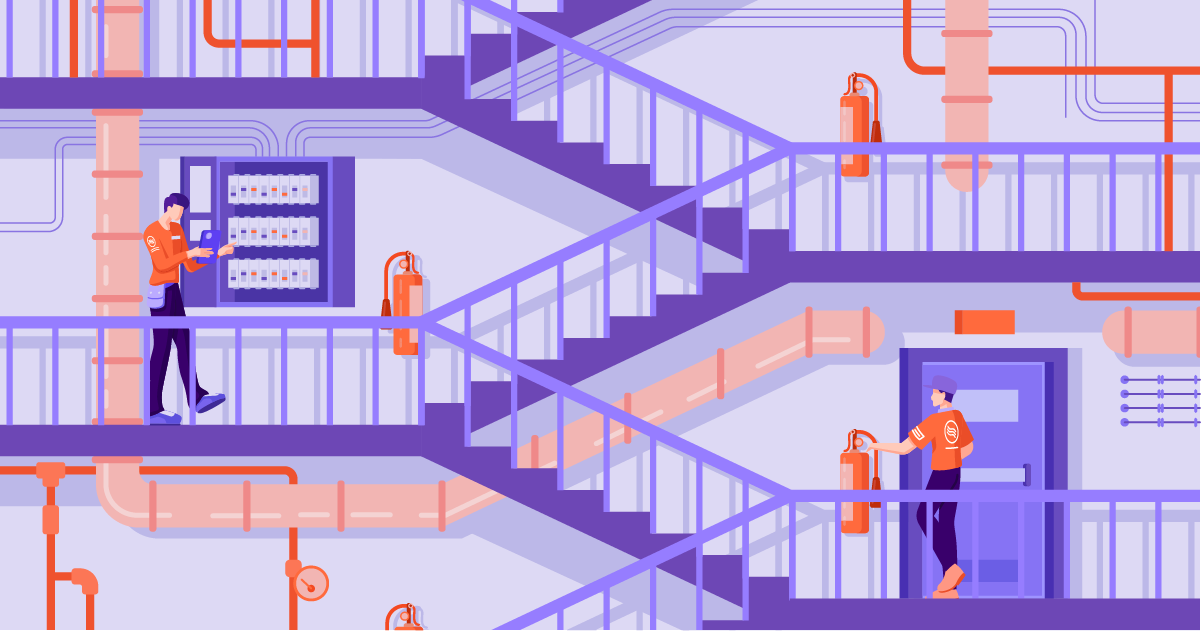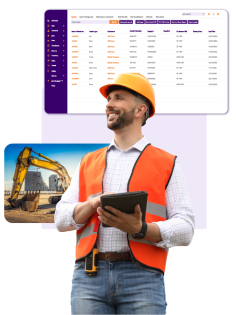Drainage Maintenance Guide (Preventive & Scheduling)

Organising drainage maintenance can be a cumbersome and headache-inducing task, requiring careful coordination and attention to detail.
Proper drainage maintenance is crucial for various reasons. It prevents water damage and erosion by controlling water flow, reducing the risk of flooding, and preserving soil integrity. It also prevents the formation of stagnant water, which can attract pests and pose health risks. Additionally, drainage maintenance preserves infrastructure by preventing water-related damage to buildings and roads. It protects the environment by minimising the runoff of pollutants and preserving water quality.
Lastly, maintaining proper drainage enhances landscapes and aesthetics by promoting healthy plant growth and preventing water accumulation. Regular drainage maintenance ensures functional, long-lasting systems that benefit property owners, public health, and the environment.
In this blog we will dive into:
- Why Drainage Maintenance is Important
- Understanding Your Drainage System
- Preventive Drainage Maintenance Tips
- How to Schedule Drainage Maintenance
- Dealing with Common Drainage Issues
- and how civil management software can help you
Why Drainage Maintenance is Important
Without regular drainage maintenance, a host of problems can arise, wreaking havoc on our lives. Let’s dive into some of these issues and why preventive maintenance is far more cost-effective than dealing with the aftermath of neglected drainage systems.
First off, picture this: heavy rain pouring down, but instead of being swiftly drained away, the water starts to accumulate. Before you know it, your property is flooded. Furniture, electronics, and cherished possessions are soaked, and the repair bills start to pile up. That’s right, inadequate drainage can lead to disastrous flooding, causing extensive damage to homes and businesses.
But the damage doesn’t stop there. When water can’t properly flow away, it starts to erode the soil around your property. Slopes become unstable, and landscaping gets washed away, leaving behind a messy and unsightly scene. Repairing this erosion can be a costly and time-consuming endeavour.
Now, let’s talk about health risks. Stagnant water becomes a breeding ground for pesky mosquitoes and other pests. These bloodsuckers not only annoy you with their incessant buzzing but also pose a serious health risk, as they can transmit diseases like dengue fever and West Nile virus. Neglected drainage systems can inadvertently create a buzzing, disease-spreading paradise right on your doorstep.
But fear not! Here’s where preventive maintenance swoops in to save the day. By regularly inspecting and cleaning your drainage systems, you can catch and fix minor issues before they snowball into costly disasters. It’s like giving your drains a spa treatment, ensuring they’re in tip-top shape to handle whatever Mother Nature throws their way.
Preventive maintenance is a smart investment. It’s much more cost-effective to spend a little time and money on regular maintenance than to deal with the astronomical expenses that come with water damage repairs, erosion restoration, and pest control. Plus, you get to enjoy the peace of mind knowing that your property is protected and that you’ve taken the necessary steps to safeguard the health and well-being of yourself and those around you.
So, let’s not wait for the next storm to hit. Take charge of your drainage systems, show them a little love, and save yourself a whole lot of trouble down the line. Trust me, your wallet and sanity will thank you!
Understanding Your Drainage System
A typical drainage system comprises several key components, each playing a vital role in effectively managing water flow and preventing problems. Let’s explore these components and their functions:
Surface Drainage: Surface drainage systems are designed to remove water from the surface of the ground. They consist of features such as channels, ditches, and catch basins that collect and direct water away. These components help prevent water from pooling and causing damage.
Subsurface Drainage: Subsurface drainage systems are installed beneath the ground and are responsible for removing excess water from the soil. They typically utilise perforated pipes or drain tiles buried in trenches. Subsurface drains help control groundwater levels, preventing waterlogging and soil saturation.
Slope Drainage: Slope drainage involves the proper grading of the land to facilitate water flow. The land is shaped to create a gentle slope that directs water away from buildings and structures. This type of drainage system relies on the natural force of gravity to guide water runoff.
Downspouts and Gutters: Downspouts and gutters are important components of a building’s drainage system. Gutters collect rainwater from the roof and direct it to downspouts, which channel the water to the ground or into a drainage system. They prevent water from cascading directly down the sides of the building, protecting the foundation and preventing erosion.
Grates and Drain Covers: Grates and drain covers are placed over openings in surface drainage systems to prevent debris, leaves, and larger objects from entering and clogging the system. They ensure the smooth flow of water while minimising the risk of blockages.
Detention and Retention Ponds: Detention and retention ponds are common in larger-scale drainage systems. Detention ponds temporarily hold excess water during heavy rainfall, gradually releasing it to avoid overwhelming downstream areas. Retention ponds, on the other hand, permanently hold water, serving as a reservoir or habitat for aquatic life.
Culverts: Culverts are structures that allow water to pass under roads, railways, or other obstacles. They are typically made of pipes, boxes, or reinforced concrete and play a crucial role in maintaining the continuity of water flow across different areas.
It’s important to note that drainage systems can be classified into different types based on their specific purposes. These include surface drainage systems, which primarily address surface water runoff; subsurface drainage systems, which manage groundwater levels; slope drainage systems, which utilise land grading techniques; and downspout drainage systems, which handle rainwater from roofs.
Understanding the components and types of drainage systems allows for better planning and implementation of effective drainage strategies tailored to specific needs. Whether it’s diverting water away from buildings, managing groundwater, or preventing erosion, a well-designed drainage system is essential for maintaining a safe and functional environment.
Preventive Drainage Maintenance Tips
Here are some tips for preventive maintenance of drainage systems that can help extend their lifespan and prevent common drainage problems:
Regular Inspections: Conduct routine inspections of your drainage system to identify any signs of damage, blockages, or deterioration. This allows you to address issues promptly before they worsen.
Cleaning and Clearing: Regularly clean gutters, downspouts, and drain covers to remove debris, leaves, and other obstructions that can impede water flow. This helps prevent clogs and ensures efficient drainage.
Proper Installation: Ensure that your drainage system is installed correctly, with proper grading, appropriate pipe sizing, and sufficient slope to facilitate water flow. Proper installation minimises the risk of water accumulation and other drainage problems.
Address Landscaping Factors: Consider the impact of landscaping on your drainage system. Avoid planting large trees or shrubs near drainage lines to prevent root intrusion and potential damage. Adjust landscaping features to promote proper water flow away from structures.
Maintenance Records: Keep detailed records of maintenance activities, including dates of inspections, cleanings, repairs, and any changes made to the drainage system. These records help you track the system’s history and make informed decisions.
Using software, such as field service management software or asset management software, can greatly assist with implementing these tips. The software can provide scheduling and reminder features to ensure regular inspections and maintenance tasks are not overlooked. It can also help store and track maintenance records, allowing for easy access to historical data and ensuring a comprehensive view of the drainage system’s health.
By following these preventive maintenance tips and leveraging software solutions, you can proactively maintain your drainage system, identify potential issues early on, and take appropriate measures to extend its lifespan. This helps prevent common drainage problems like clogs, water damage, and erosion, saving you time, money, and headaches in the long run.
How to Schedule Drainage Maintenance
The frequency of inspecting and servicing drainage systems depends on various factors such as the age and type of the system, local climate, and potential risks. Generally, it is recommended to have drainage systems inspected annually or semi-annually.
However, older systems or those in areas prone to heavy rainfall or extreme weather conditions may require more frequent maintenance. Regular inspections help identify any blockages, leaks, or damage that could impede proper water flow.
To keep track of maintenance schedules, it’s useful to use a calendar or reminder app that alerts you when inspections are due, ensuring timely maintenance and minimising the risk of drainage system issues.
Dealing with Common Drainage Issues
Here are some common drainage issues and possible solutions for each:
Clogged Drains: A clogged drain can cause water to back up and create pooling. To address this, you can try using a plunger or a drain snake to remove the blockage. For minor clogs, using household remedies like baking soda and vinegar or a mixture of hot water and dish soap may help. If DIY methods don’t work or if the problem persists, it’s best to call a professional plumber.
Standing Water: If you notice persistent standing water in your yard, it could indicate poor drainage. Consider improving surface grading by levelling the area or creating gentle slopes to encourage water flow away from your property. Installing a French drain, which is a trench filled with gravel and a perforated pipe, can also help redirect water. Handling these solutions yourself is generally feasible, but consulting a landscaping professional may be beneficial for more complex situations.
Downspout Issues: When downspouts are not functioning properly, water can accumulate around the foundation of your home. Ensure downspouts are extended at least 3 feet away from the house and are not obstructed. If necessary, attach downspout extensions or redirect water into a drainage system. These are typically tasks that can be handled on your own.
Erosion Control: If erosion is occurring on your property due to water runoff, you can implement erosion control measures. Planting vegetation, such as grass or ground cover, helps stabilise the soil and reduces erosion. Mulching and installing erosion control blankets or mats are also effective options. Managing erosion yourself is feasible, but for large-scale erosion issues or complex terrain, seeking assistance from an erosion control specialist might be necessary.
Sewer Line Blockage: A blocked sewer line can cause backups and unpleasant odours. For minor blockages, you can try using a sewer auger or chemical drain cleaner. However, sewer line issues are best handled by professional plumbers who have the expertise and specialised equipment to diagnose and resolve the problem effectively.
Remember, it’s crucial to prioritise safety and consider your skill level when deciding whether to handle drainage issues yourself or call a professional. While some tasks can be tackled independently, complex problems or situations that require specialised knowledge should be entrusted to experienced professionals to ensure proper resolution and prevent further damage.
Introducing FieldInsight
FieldInsight is a powerful software solution designed to assist field service businesses in effectively managing and addressing the common drainage issues mentioned earlier. With its comprehensive features and capabilities, FieldInsight can streamline operations, improve efficiency, and enhance customer service.
FieldInsight includes automated reminders and notifications, keeping track of maintenance schedules for drainage systems. This helps businesses stay proactive and ensures timely inspections, servicing, and preventive maintenance to address issues before they escalate.
FieldInsight features a CRM module that stores customer data, including job history, preferences, and specific drainage system details. This information enables field service businesses to provide personalised and efficient customer service, ensuring they understand the unique needs of each client’s drainage system.
By leveraging FieldInsight, field service businesses can streamline their operations, optimise resource allocation, and provide exceptional service to their customers. The software’s comprehensive capabilities enable efficient scheduling, real-time data capture, maintenance reminders, and professional reporting.
With FieldInsight, field service businesses can efficiently tackle drainage issues, enhance productivity, and deliver top-notch service to their clients. Book a call with one of our product specialists today!
What You Should Do Now
- Book a Demo. You’ll be in touch with an automation expert who has worked in this space for over 5 years, and knows the optimal workflow to address your needs.
- If you’d like access to free articles about managing HVAC workflows, go to our blog.
- If you know someone who’d enjoy reading this page, share it with them via email, Linkedin, Twitter, or Facebook.





